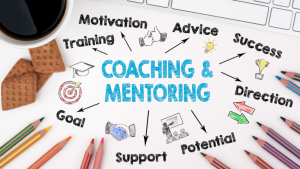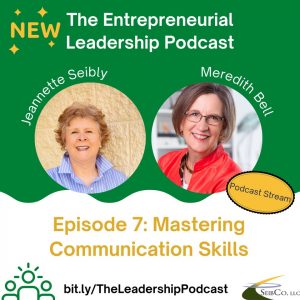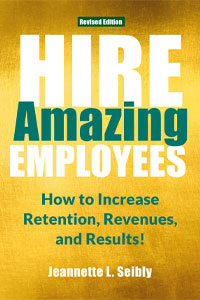
When you feel uncertain about a decision, it is often due to your fear of making a mistake, experiencing a failure, or not being in control of the outcome. Uncertainty feels uncomfortable. Many people will do everything they can to avoid it, which causes anxiety in their jobs, relationships, careers, businesses, and life choices. But life never provides absolute certainty.
So, how can you make uncertainty a superpower and have it help you create a great business, career, and life? Keep reading!
Tips to Work Through Uncertainty for Great Results
Be Open to Others’ Ideas. Like many leaders, you rely on your thoughts, opinions, and feelings about what is true and certain. But this is short-sighted. Instead, welcome others’ ideas. Learn how to brainstorm. For each idea, develop five reasons it could work, not why it won’t.
Unleash the Power of Others. Delegate! Get comfortable delegating! Allow others the opportunities to explore new ideas, even if you’re uncertain whether or not they’ll work. Their ideas and results can often be better than yours if you get out of the way!
Embrace Not Knowing How to Achieve the Outcome. Otherwise, you’ll feel stuck, paralyzed, and procrastination will set in. Instead, allow for the fact that you don’t know that you don’t know! And not knowing is OK. (Yes, reread those sentences.) Be clear about the goal and outcome you want to achieve. Now, move forward step-by-step with your team and executive coach through the uncertainty.
Develop Inner Confidence. Celebrate each step along the way, no matter how big or small. Develop “brags” to help you gain confidence and believe in yourself. “Brags” remind you that you’ve handled uncertainty and achieved successful outcomes in the past.
Make the Best Decisions for Now. When making decisions, collect factual data and don’t rely solely on your intuition/gut or overthink everything. Remember, no one has a crystal ball that foretells the future. While many believe success demands you move forward, a good decision can also include staying where you are (e.g., signing a new lease with your current landlord). Remember, uncertainty can and will still occur because uncertainty doesn’t go away.
Avoid Group Think; It Impedes Agility. Too often, during times of uncertainty, fear will prevail. Then, the team will adapt to the fear. Instead, share your concerns, and ask good questions.
- “What would be the best outcome for this project or program?”
- “What would we need to change?
- “Give me five reasons why these changes could work?”
- “Why won’t these changes work?”
Now, allow the team to own the project. Be their champion for winning and working through the unknown factors! And always welcome critical thinking!
If you embrace these six tips, uncertainty becomes your superpower!
©Jeannette Seibly 2023 All Rights Reserved
 Jeannette Seibly is The Leadership Results Coach. She is an award-winning international executive coach, speaker, and business author. Her wisdom of over 30 years guides clients to work through sticky situations and challenging relationships. Contact Jeannette for a confidential discussion. PS: She’s also a three-time Amazon Best-Selling Author!
Jeannette Seibly is The Leadership Results Coach. She is an award-winning international executive coach, speaker, and business author. Her wisdom of over 30 years guides clients to work through sticky situations and challenging relationships. Contact Jeannette for a confidential discussion. PS: She’s also a three-time Amazon Best-Selling Author!
A note from Jeannette about embracing uncertainty in work and life: We seek certainty in everything we do. We think it helps us avoid making mistakes or experiencing failure while staying in control of the outcome. Yet, doing the same old same old will hurt your team, results, and bottom line. Want uncertainty to become one of your superpowers? Contact me for a confidential conversation.
Have You Considered: Strengthening your inherent superpowers? It can make a big difference in your success as a leader! I have extensive experience guiding leaders to work with and through their teams to achieve unprecedented results. Contact me if you want an in-depth, one-on-one hour over 13 weeks. Remember, coaching speeds up your ability to win.
 Taking the safe path to avoid uncertainty will never work in your business, career, and life. Develop your superpower and learn how to work through uncertainty. It builds confidence and the ability to influence others! Take action and contact me for a confidential conversation.
Taking the safe path to avoid uncertainty will never work in your business, career, and life. Develop your superpower and learn how to work through uncertainty. It builds confidence and the ability to influence others! Take action and contact me for a confidential conversation.


 Have you met a challenge you’ve not been able to work through? Many managers and directors have, and their bosses may not be of much help. Now’s the time to develop your resilience and ability to achieve intended results! Waiting will not make a positive difference.
Have you met a challenge you’ve not been able to work through? Many managers and directors have, and their bosses may not be of much help. Now’s the time to develop your resilience and ability to achieve intended results! Waiting will not make a positive difference. 
 Jeannette Seibly is The Leadership Results Coach. With over 30 years as an award-winning international executive coach, speaker, and business author, Jeannette’s clients effectively work through sticky situations and challenging relationships to become positive influencers. Contact Jeannette for a confidential discussion. PS: She’s also a three-time Amazon Best-Selling Author!
Jeannette Seibly is The Leadership Results Coach. With over 30 years as an award-winning international executive coach, speaker, and business author, Jeannette’s clients effectively work through sticky situations and challenging relationships to become positive influencers. Contact Jeannette for a confidential discussion. PS: She’s also a three-time Amazon Best-Selling Author! How’s your leadership development progressing? Are you moving forward … or a tad stuck? Do you need a “nudge” or “kick-in-the-butt?” Want to accelerate and soar your results?
How’s your leadership development progressing? Are you moving forward … or a tad stuck? Do you need a “nudge” or “kick-in-the-butt?” Want to accelerate and soar your results? 
 How’s your leadership development progressing? Are you moving forward … or a tad stuck? Do you need a “nudge” or “kick-in-the-butt?” Want to accelerate and soar your results?
How’s your leadership development progressing? Are you moving forward … or a tad stuck? Do you need a “nudge” or “kick-in-the-butt?” Want to accelerate and soar your results? 
 Announcing New Workshop! Traditional leadership (e.g., formal, metrics-driven) is being replaced with human leadership (e.g., focus on the human dynamics that impact results). For example, “That’s how it’s always been done.” vs. “Great idea. How do you recommend we implement it?” However, your managers and directors are being overlooked regarding the training required to be an effective boss and leader. Read about my newest workshop:
Announcing New Workshop! Traditional leadership (e.g., formal, metrics-driven) is being replaced with human leadership (e.g., focus on the human dynamics that impact results). For example, “That’s how it’s always been done.” vs. “Great idea. How do you recommend we implement it?” However, your managers and directors are being overlooked regarding the training required to be an effective boss and leader. Read about my newest workshop: 
 This week’s PODCAST: Listen to the Mastering Communication Skills with my guest, Meredith Bell, on
This week’s PODCAST: Listen to the Mastering Communication Skills with my guest, Meredith Bell, on 
 This week’s PODCAST: Listen to How the pandemic led a professional copywriter, speaker and author to become an accidental artist with my guest, Debra Jason, on
This week’s PODCAST: Listen to How the pandemic led a professional copywriter, speaker and author to become an accidental artist with my guest, Debra Jason, on 
 This week’s PODCAST: Listen to the Moments of Brilliance: You Don’t Have to Have the Answers! with my guest, Denise Roberts, on
This week’s PODCAST: Listen to the Moments of Brilliance: You Don’t Have to Have the Answers! with my guest, Denise Roberts, on 

 Are you asking good, job-related interview questions? When hiring new employees or rehiring former ones, ask about their ability to handle mistakes. Why? 90% of new hires fail because they dismiss coaching or advice about how to improve. Get your copy of the newly released,
Are you asking good, job-related interview questions? When hiring new employees or rehiring former ones, ask about their ability to handle mistakes. Why? 90% of new hires fail because they dismiss coaching or advice about how to improve. Get your copy of the newly released,